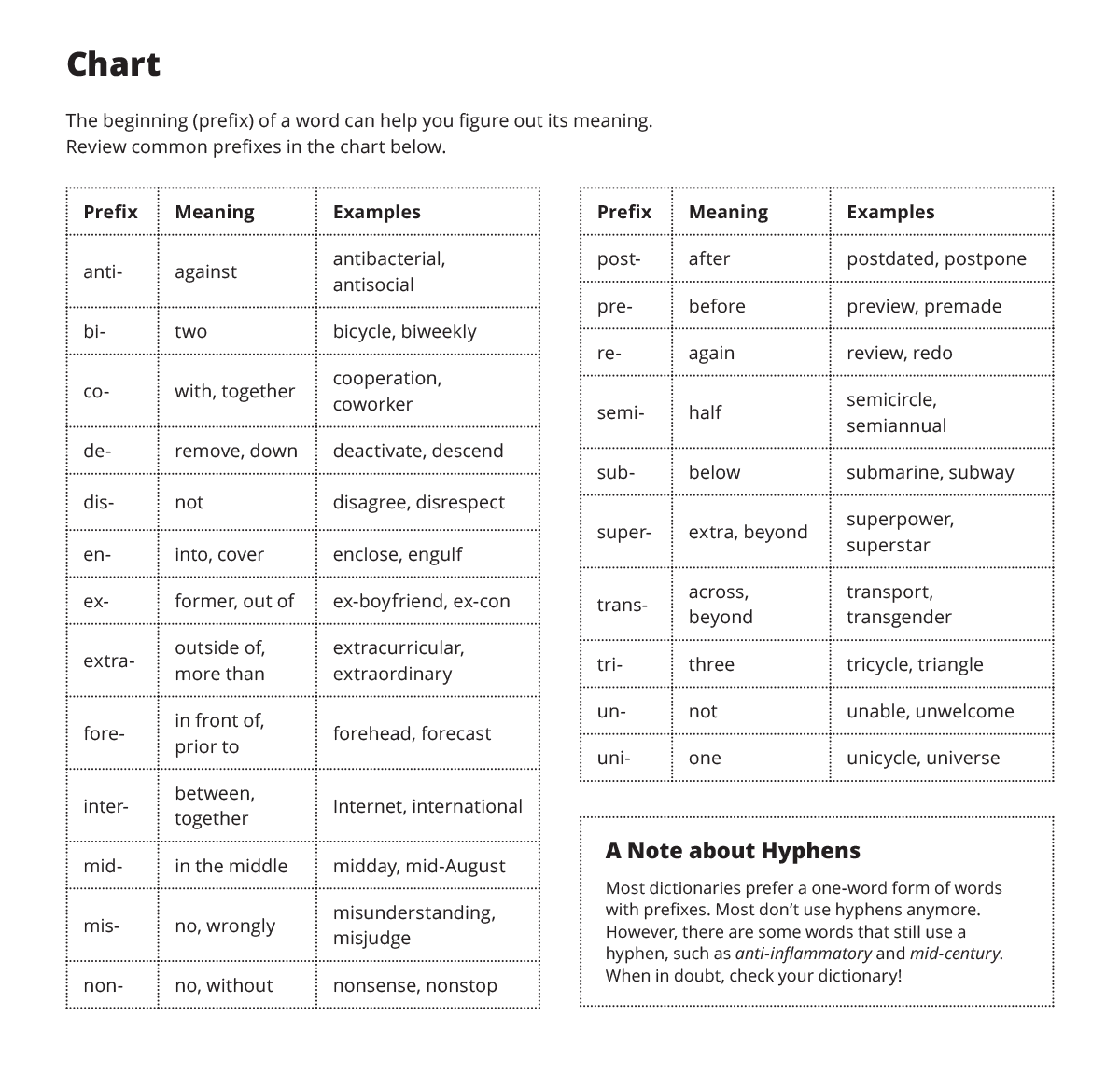Share this post
A prefix is a syllable or two that has a specific meaning and can be attached to the beginning of many root words, such as re- (review, revise, redo) or un- (unnecessary, unbelievable, undone).
Do you specifically teach prefixes to your English students? When I first started teaching, I would only share a prefix’s meaning if it came up in class. Then one day I decided to share a list of common prefixes with my intermediate‑level students, and I noticed it helped them pick up new vocabulary more easily. It gave my students confidence to see a new word and realize they already knew half the meaning.
The key is moderation. We don’t want to give our students a list of 100 prefixes—that’s overwhelming and frustrating. Instead, try presenting the condensed list of 23 common prefixes below, or try teaching only one a day. And practice makes perfect! The review activities suggested below will help the new meanings stick.
Prefix Chart
Check out our Grammar & Usage resource on Prefixes for a list of common prefixes and a practice activity.
Prefixes – Grammar & Usage
Prefix Activities
Here are some other activities you can do with your students! Some of these activities use flashcards. You’ll find Prefix Flashcards in our Grammar & Usage Resources section, but most activities can be adapted by writing the prefix on the board instead of holding up a flashcard.
What Does It Mean?
Divide the class into two teams. Hold up a flashcard in front of the class. Whoever calls out the meaning first gets a point for their team.
How Many Words?
Divide the class into two teams. Hold up one prefix and have students shout out as many words beginning with that prefix as they can. Alternatively, challenge pairs to write lists of words that match the prefixes you hold up. The team or pair with the most words for a given prefix is the winner of that round.
Rooting Around
As a review of common prefixes + root words, have students sit in a circle, and place the prefix flashcards face up in the center. Call out a root word, and any student can jump up and grab a matching prefix (or have them take turns to avoid collisions). Some roots may have more than one answer (e.g., review, preview) for bonus points.
Quiz Time
Put students into small groups or pairs and give them a set of flashcards. Have them take turns quizzing each other. If a student says the correct meaning, he or she can keep the card. The student with the most cards at the end is the winner.
Mix & Match
Give pairs 20 slips of paper each and have them create a list of 10 words that use a prefix. They must write the prefix on one slip and the corresponding root word on the other. Then each pair can mix up their cards and pass them to another group. Challenge students to reassemble their classmates’ words by matching the prefixes and root words.
Board Race
On the board, write the meanings of the prefixes in two columns (use the same words in both columns but mix up the order so that it’s harder to cheat off the other team). Then divide students into two teams and have them line up at the back of the class. Team members (one at a time per team) must run up to the board and fill in one of the prefixes. The next person in the team can only go when the first person has run back and tagged them. The first team to complete their list correctly is the winner!
Related Resources
Comments (3)
Result I.(Teacher)
September 5, 2022 at 8:52 pm

Tanya Trusler(Author)
September 6, 2022 at 7:17 pm
Charles D.(Teacher)
June 7, 2024 at 12:29 pm

Tanya Trusler(Author)
June 7, 2024 at 10:40 pm
Sefanaia Ravatu(Guest)
October 6, 2024 at 5:21 am

Tanya Trusler(Author)
October 7, 2024 at 3:59 pm

